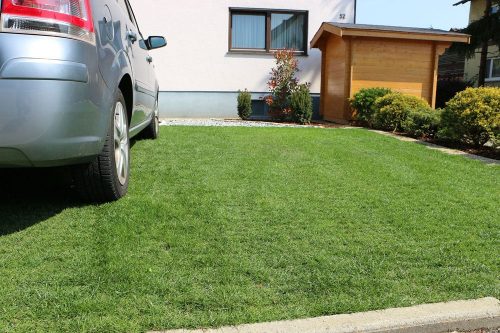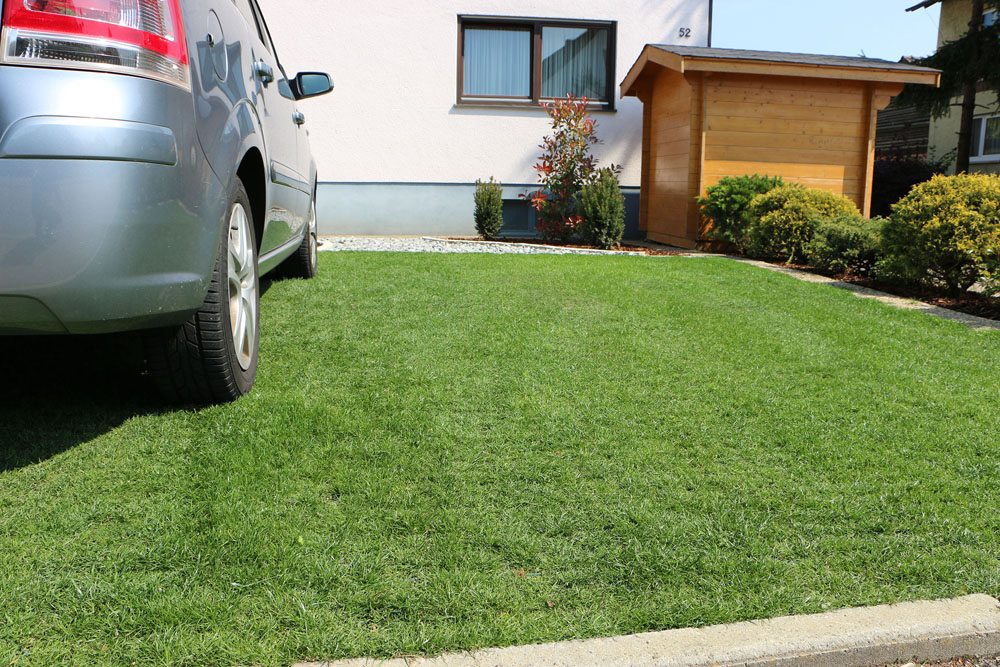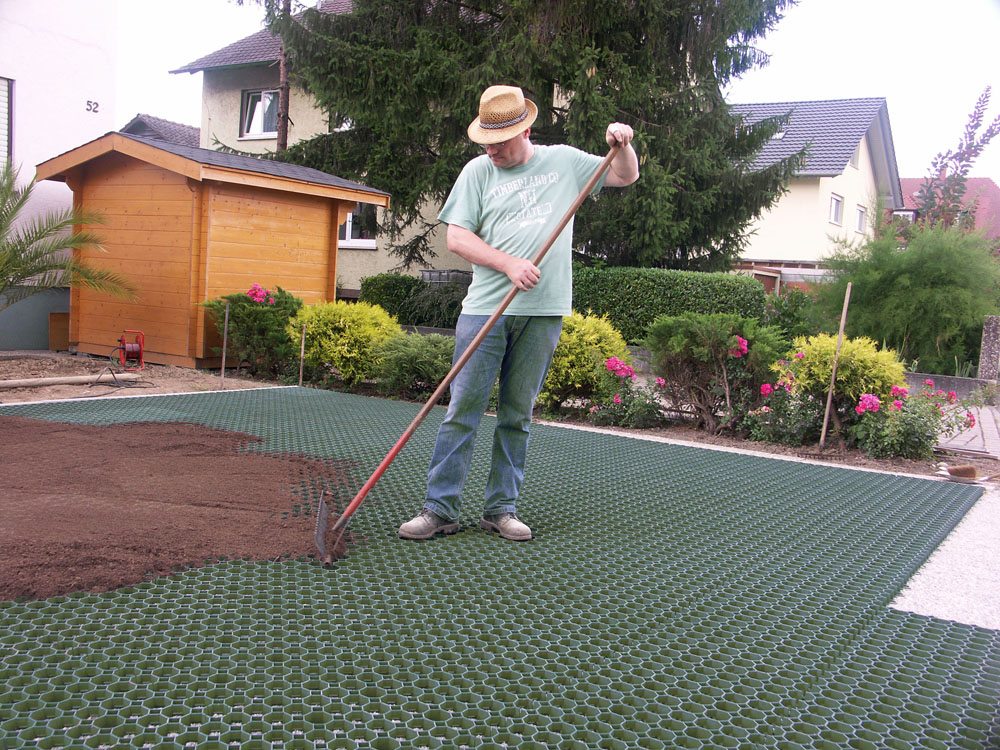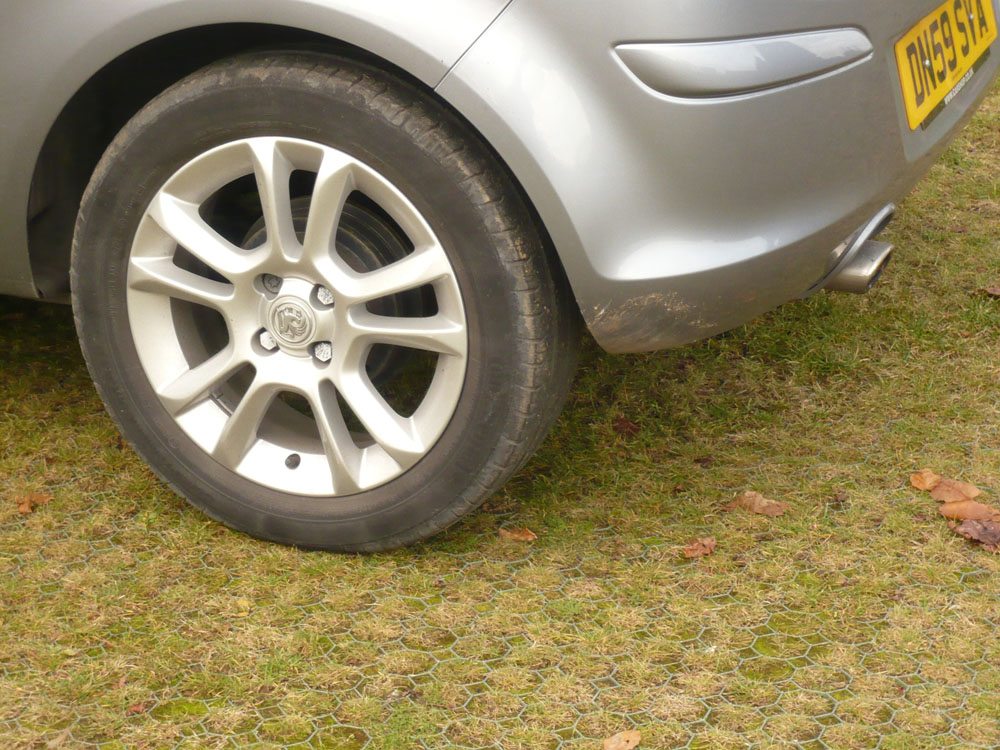EconoGrid 40® Pavers
EconoGrid 40® is a flooring alternative that can provide a solution to a wide range of trafficking needs over grass surfaces. The need might be an overflow car park, an emergency access route or residential parking.
EconoGrid 40® pavers have been manufactured with carefully selected recycled plastics, meeting the demands and loads imposed by heavy road vehicles.
The 40mm cells on the EconoGrid 40® protect the grassroots from damage. The indented design allows grass runners to grow from cell to cell resulting in stronger and thicker grass surface.
EconoGrid 40® range provides a vehicle access solution that costs less than concrete and is pervious enabling you to comply with soft landscaping regulations. Councils generally required over 15% of your commercial property to be soft landscape.
Porous Paving systems reduce the need for expensive drainage solutions and stormwater retention requirements whilst replenishing water to landscape areas and presenting an aesthetically pleasing site.
Designed as a DIY installation All Stake Supply provides detailed downloadable installation instructions on this website. Alternatively, we can arrange accredited landscape companies to install grass protection products.
Price: $30.25 psm – 3 pieces per sqm
- Car and Bus Coach Parks
- Emergency and Heavy Vehicle Access Roads
- Grass Lawns
- Walkways and Disabled Routes
- Cycle Paths
- Golf Buggy Paths
- Driveways and Residential Parking
- WSUD Water Sensitive Urban Design
Now that you’ve bought EconoGrid 40® Pavers, they’ll need to be installed. However, installing the pavers isn’t as simple as setting and forgetting.
To install your grass pavers, you’ll need to do the following:
Assess the site.
Before you do any work, you’ll need to assess the site that you’ll be laying the pavers on. Some of the questions that’ll you’ll need to ask are “What is the current condition of the soil?” and “Does the site drain naturally?” Another aspect you’ll need to look for is if the ground you’re installing on is sloped. If it is sloped, one of our friendly staff will be able to guide you on how to install on a sloped surface.
Compact the sub-grade.
The sub-grade is the deepest point of the soil that you’ll need to access. This layer is calculated after all the depths of all the layers above have been calculated, with the calculation being dependent on the amount of traffic that the ground is predicted to bear. Once you have reached the sub-grade, it is best that you compact it to make sure that you have an even working surface.
Fill the sub-base layer.
Above the sub-grade is the sub-base layer, which will need to be made of a hard-wearing material that allows for easy draining, such as aggregate or angular stones. Once you have made this layer to the required depth, you’ll need to compact it to keep your working space as level and workable as possible. If you’re worried about not being able to keep the sub-base layer level, place a geogrid mesh, which will not only fill in some of the space that you’ll be using, but it will also reduce unevenness that can occur.
Fill the bedding layer.
The last layer of soil that you’ll need to fill is the bedding layer. The bedding layer should consist of at least 40mm of sandy soil, which will be used to build a strong layer of grass once the pavers have been laid. This layer must be no more than 50mm to avoid affecting the structural integrity of the other layers.
Laying the EconoGrid 40® Pavers.
Once all the layers have been set out and filled, you’ll be able to set the grass pavers. Although our pavers are known for their strength and durability, they are able to be cut with a handsaw, which can allow you to fill in corners and other difficult to fill spaces.
Filling in the pavers.
When the pavers have been laid, they can be filled in with a layer of soil and grass that’s approximately 5mm high, to make sure that the grass will remain uncompacted when faced with traffic. Once the grass has been planted, it’s best to wait to make sure that the grass matures enough to the point where it can withstand traffic and where the roots can intertwine with the pavers, strengthening the driveway. On average, the grass should be mature enough to withstand traffic after 6 – 8 weeks.
If you follow these steps, you should end up with a permeable driveway that’s strong, aesthetically pleasing and easy to maintain. If you’re looking to learn more about what type of grass pavers you’ll need, or if you have some enquiries about EconoGrid 40® pavers, talk to one of our experienced and friendly team members today on 1300 130 123 today!
- Patented designed allowing load bearing up to 150t/m2
- Manufactured from 100% recycled polymer
- Paver profile that allows expansion on warmer days to stop lifting
- Environmentally friendly, aesthetically pleasing and free draining natural grass or gravel surface
- Open structure to allow unhindered water permeability
- All plastics used are stable, chemically inert and are not toxic so are suitable for normal soil conditions
- Allowing you to park on grass
How can I determine if EconoGrid 40® pavers are right for me?
Our website houses a lot of information about which grass pavers work best for individual situations. We are also available to chat about your needs at 1300 130 123.
How often will I need to replace my EconoGrid 40® pavers?
Grass pavers will not need to be replaced ever.
Do you offer council/trade discounts for EconoGrid 40® pavers?
We offer quantity discounts.
What is the maximum load per m2?
150 ton is the maximum load per Econogrid, which is more than sufficient for most uses.




